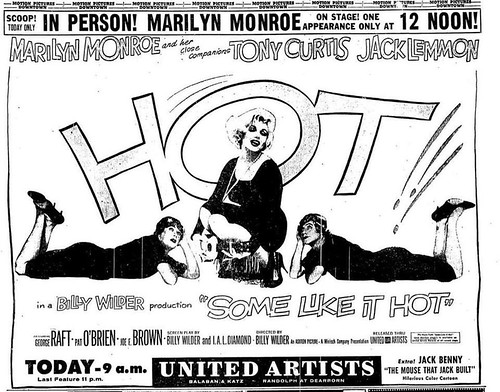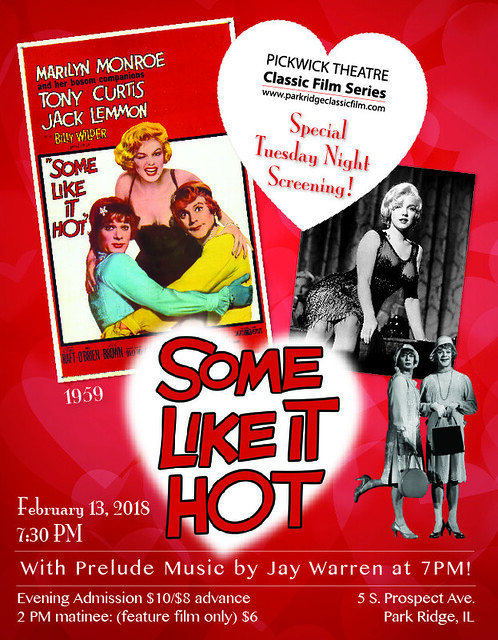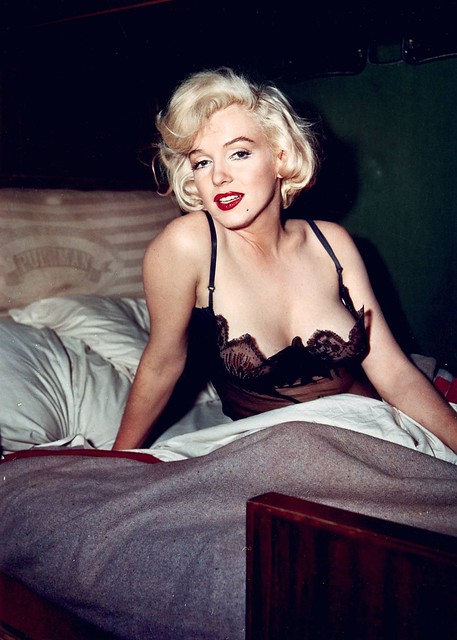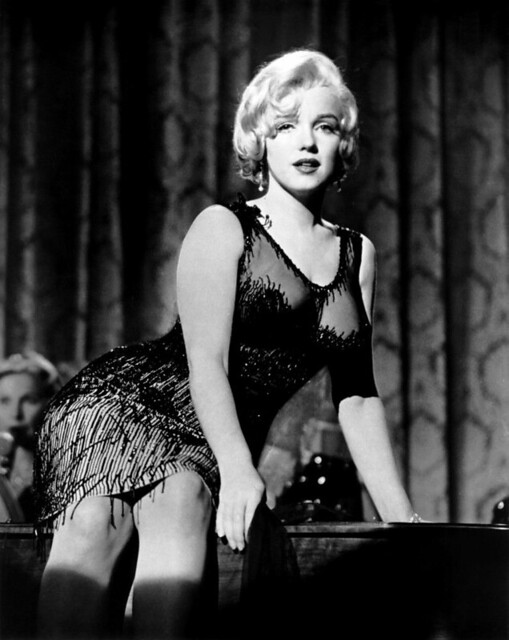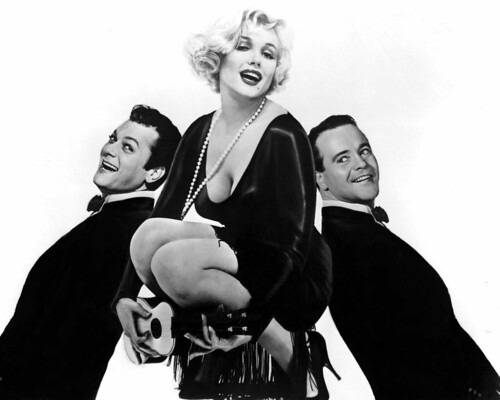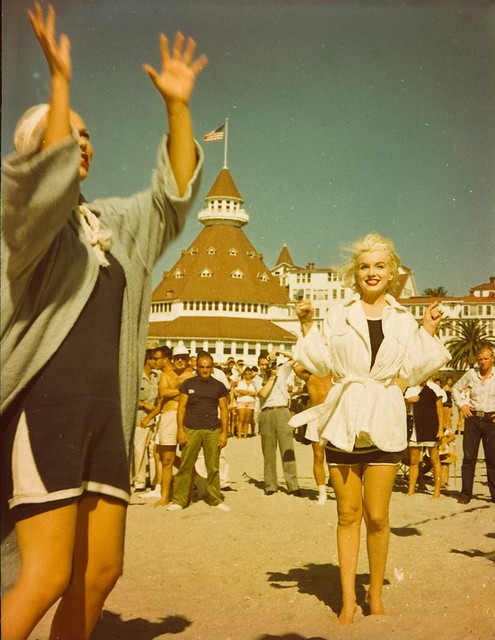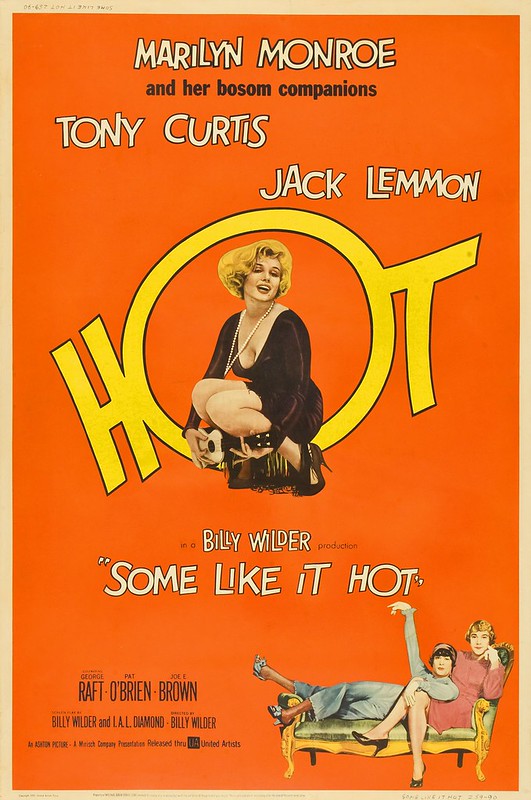WHAT: Some Like It Hot (1959) presented in DCP
WHEN: February 13, 2018 2 PM & 7:30 PM
WHERE: Pickwick Theatre, Park Ridge, IL
WHAT ELSE: Organist Jay Warren performs prelude music at 7 PM
HOW MUCH: $10/$8 advance or $6 for the 2 PM matinee
On Tuesday, February 13, 2018, the Pickwick Theatre Classic Film Series will present a laugh-filled valentine to our audience when we screen 1959’s Some Like It Hot— a film the American Film Institute ranks as the “greatest comedy of all time.” With Some Like It Hot being directed by the legendary Billy Wilder (who made some of the best motion pictures) and starring Marilyn Monroe (the screen’s greatest sex symbol), the question isn’t whether we’ll sell out, but how fast will we sell out? We can’t wait for this year’s Valentine’s Eve show. Some Like It Hot is pure entertainment and a film of meticulous craftsmanship.
When two out-of-work musicians from Chicago (Tony Curtis, Jack Lemmon) witness a gangland massacre on Valentine’s Day, they beat it out of town in drag and join an all-girls jazz band. Marilyn Monroe plays Sugar, the band’s singer who is looking for the “sweet end of the lollipop.”
As first conceived, Billy Wilder envisioned Tony Curtis playing opposite Frank Sinatra and Mitzi Gaynor, but fortunately for film history, Sinatra stood Wilder up when they were to meet for lunch! Instead, Wilder cast a legitimate actor who could do comedy. Jack Lemmon, who became a sort of “every man” throughout his career, brought a manic energy and borderline lunacy to the role. He gives the film an insane momentum that Sinatra could never have done. Throughout the film, his character, Daphne, embraces the moment, while Curtis’ Josephine is the more restrained one. Marilyn Monroe, who had earlier appeared in Wilder’s The Seven Year Itch (1955), wanted to do the film but was known for being difficult. She lived up to that reputation on the set. Nevertheless, with great patience, Wilder was able to get a wonderful performance out of her.
This was a challenging period in Marilyn’s life when there were many influences trying to control her. There always seemed to be turmoil in her personal life. Even on set, she was under the influence of her acting coach, Paula Strasberg, and the Method school of acting– a technique which, according to Tony Curtis, did more damage for her than good. Strasberg even tried to influence the production, but Wilder put her in her place early. Aware of Marilyn’s eccentricities, the other actors were patient and knew they had to be perfect every time they did a take because it was Marilyn’s take that would be printed. There’s the famous story of Marilyn having a mental block and botching up one line of dialogue when she had to enter the girls’ hotel room and ask, “Where’s that bourbon?” Two days and nearly sixty takes later they finally got her to say it– with her back to the camera. Although Billy Wilder could have simply dubbed in the line, this was more a battle of wills with Wilder making sure she did her job.
Marilyn is luminous in the film. She radiates sexuality, but compared to a Jayne Mansfield, for instance, it was a more innocent type of sexuality. A good example of this is the scene where she gets in the sleeping berth with “Daphne.” It’s suggestive, but never crude, as those situations would become in modern screen comedies. Marilyn’s voluptuousness is enhanced throughout the film by the alluring Orry-Kelly designs. The sparkly, partially see-through dress she wears during “I Wanna Be Loved By You” may have the men in the audience wandering towards the screen and saying, “Zowie!”
Some Like It Hot also features a stellar cast of old pros from the gangster film era. We’re first introduced to them in the dramatic prologue, which sets the film during Prohibition. Some Like It Hot was shot in black and white, which evokes the period of the 1920s. George Raft, who was probably the one actor in Hollywood closest to being a gangster, plays the crime boss “Spats” Colombo, and Pat O’Brien is Detective Mulligan, the cop on his trail. Billy Wilder had wanted Edward G. Robinson for the part of Little Bonaparte (later played by Nehemiah Persoff)– his son, Edward G. Robinson, Jr., even appears as the hood flipping the coin– but Robinson and Raft had clashed on the set of Manpower (1941) with Robinson vowing that he would never work with Raft again. Some in the audience will also recognize character actors George E. Stone (“Toothpick” Charlie) and Mike Mazurki as Spats’ henchman. One of the biggest comedy stars of the 1930s, Joe. E. Brown, plays Osgood Fielding III, the millionaire who tries to seduce Daphne at the Florida hotel. At the film’s conclusion, it’s Joe. E. Brown who gets to say one of the most famous closing lines in movie history!
The screenplay, written by Billy Wilder and his longtime collaborator I. A. L. Diamond, is flawless. There was never any reason for an actor to ad-lib, especially with exchanges like the following. In this scene, “Shell Junior” (Tony Curtis) takes Sugar aboard Fielding’s yacht, which he passes off as his own:
Sugar: (noticing the fish trophy up on the wall) What is it?
Junior: It’s a member of the herring family.
Sugar: A herring? Isn’t it amazing how they get those big fish into those little glass jars?
Junior: They shrink when they’re marinated.
There is nothing formulaic about the material Wilder and Diamond wrote. The two lead actors are never locked into a particular mold, as was the case in most comedy-team films. There are no clichés of who does what, and the material always feels fresh. Though the comedy is always at the forefront, the screenplay also touches upon sexual attitudes, roles, and identity. The more suggestive allusions ran afoul of the Production Code, which at that time was beginning to lose its grip on motion picture content.
Over the years, the film’s reputation has grown. In 1989, it became one of the first twenty-five films recognized by the National Film Registry. Aside from its prominent place on the AFI list, a 2017 BBC survey ranked it as the top comedy film of all-time. It’s either at the top or near the top of every list of the great screen comedies. It’s a delightful showcase of some of the best work of Billy Wilder and Marilyn Monroe– arguably her most famous film. This is actually our first Marilyn Monroe screening at the Pickwick Theatre Classic Film Series, and we couldn’t think of a better choice for Valentine’s Day!
Tony Curtis did Cary Grant (but without Grant’s manliness) as “Shell Junior.”

Jack Lemmon with his bass fiddle.
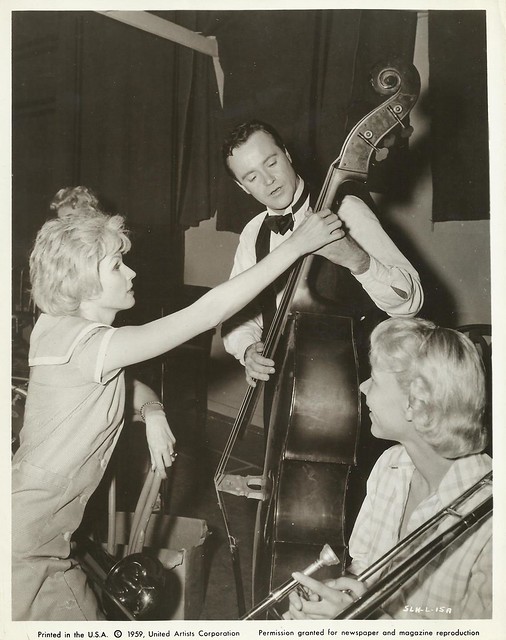
Rare behind-the-scenes photos of Marilyn while filming in San Diego.
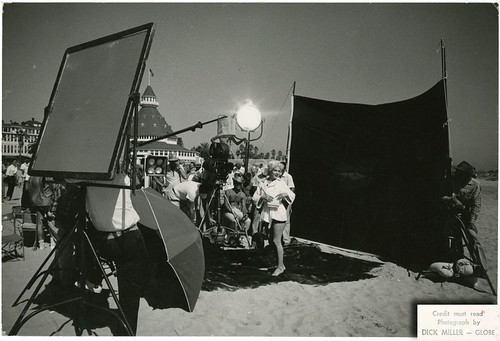
Marilyn Monroe appeared in person when the film opened in Chicago!
